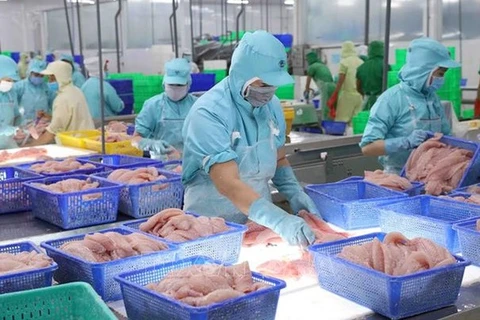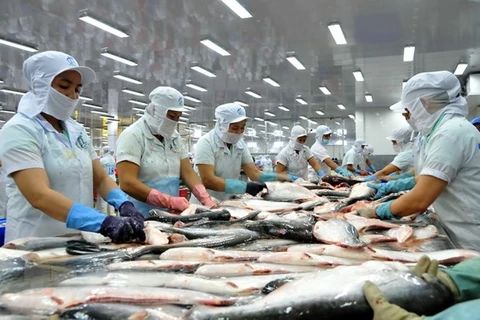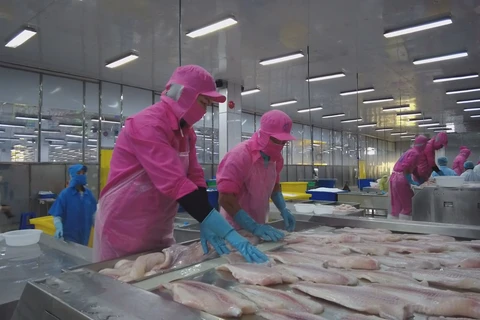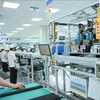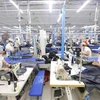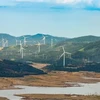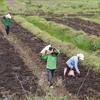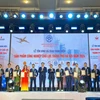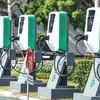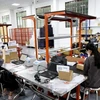HCM City (VNA) – The Vietnam Association of Seafood Exporters and Producers (VASEP) said that it has received preliminary results of the US Federal Register’s 19th anti-dumping duty review (POR19) on Vietnam’s frozen fish fillet in the period from August 1, 2021, to July 31, 2022, with positive features.
Accordingly, the US authority determines that two Vietnamese companies, Vinh Hoan Corporation and Can Tho Import Export Seafood Joint Stock Company (Caseamex), which were selected for individual examination as mandatory respondents, will enjoy a tax rate of 0 USD per kilo and 0.14 USD per kilo, respectively.
A rate of 0.14 USD per kilo will be applied on other companies including Cafatex Corporation, International Development and Investment Corporation, Loc Kim Chi Seafood Joint Stock Company, and Hung Vuong Corporation.
The preliminary tax rate given at the POR19 has decreased from the final results of the previous review.
According to VASEP, the US was the largest tra fish importer of Vietnam in 2015 and 2016. Since 2019, it has fallen to the second position after China, consuming about 22% of the product.
Vietnam mainly exports frozen tra fish fillets to the US, along with frozen pieces/cuts, frozen breaded, dried puffed and fried skin products from tra fish.
However, in the first half of this year, due to economic crisis and high inventory, Vietnam’s tra fish exports to this market slowed down. As of August 15, Vietnam had shipped 169 million USD worth of tra fish to the US, down 59% year on year.
Experts held that the positive POR19 results, combined with market factors such as increasing consumer demand during the year-end holiday season and decreasing inventories, will positively affect tra fish export of Vietnam to the US in the last months of the year.
VASEP PR Director Le Hang said that as of the end of August, Vietnam’s aquatic export revenue generated from the US market reached over 1 billion USD, down 39% year on year.
However, Hang held that the US, with the third largest population in the world, will still be the leading strategic partner of the Vietnamese fisheries sector, not only with traditional products but also high added value products to meet the demand of the middle income class or immigrants./.
Accordingly, the US authority determines that two Vietnamese companies, Vinh Hoan Corporation and Can Tho Import Export Seafood Joint Stock Company (Caseamex), which were selected for individual examination as mandatory respondents, will enjoy a tax rate of 0 USD per kilo and 0.14 USD per kilo, respectively.
A rate of 0.14 USD per kilo will be applied on other companies including Cafatex Corporation, International Development and Investment Corporation, Loc Kim Chi Seafood Joint Stock Company, and Hung Vuong Corporation.
The preliminary tax rate given at the POR19 has decreased from the final results of the previous review.
According to VASEP, the US was the largest tra fish importer of Vietnam in 2015 and 2016. Since 2019, it has fallen to the second position after China, consuming about 22% of the product.
Vietnam mainly exports frozen tra fish fillets to the US, along with frozen pieces/cuts, frozen breaded, dried puffed and fried skin products from tra fish.
However, in the first half of this year, due to economic crisis and high inventory, Vietnam’s tra fish exports to this market slowed down. As of August 15, Vietnam had shipped 169 million USD worth of tra fish to the US, down 59% year on year.
Experts held that the positive POR19 results, combined with market factors such as increasing consumer demand during the year-end holiday season and decreasing inventories, will positively affect tra fish export of Vietnam to the US in the last months of the year.
VASEP PR Director Le Hang said that as of the end of August, Vietnam’s aquatic export revenue generated from the US market reached over 1 billion USD, down 39% year on year.
However, Hang held that the US, with the third largest population in the world, will still be the leading strategic partner of the Vietnamese fisheries sector, not only with traditional products but also high added value products to meet the demand of the middle income class or immigrants./.
VNA

